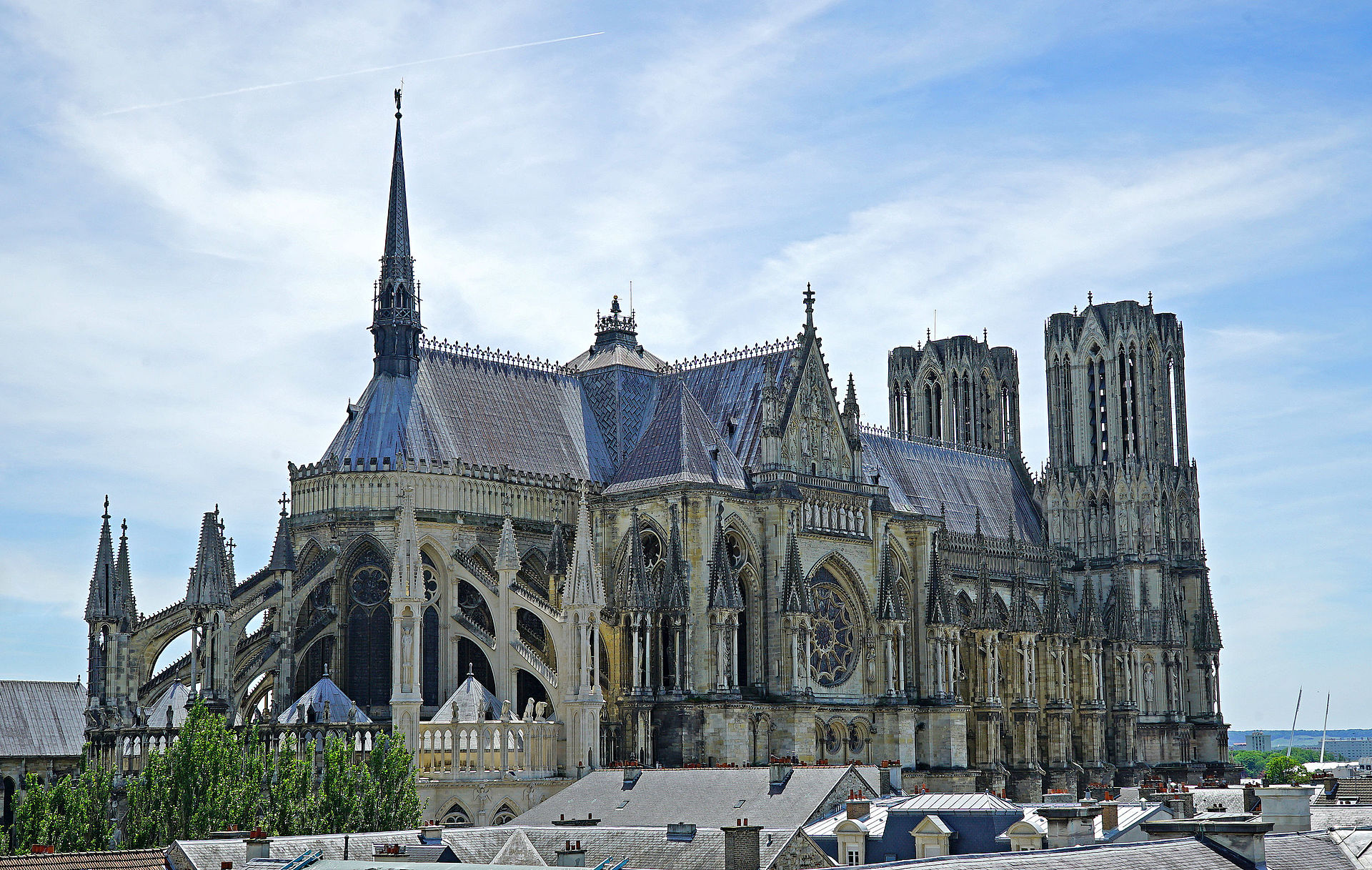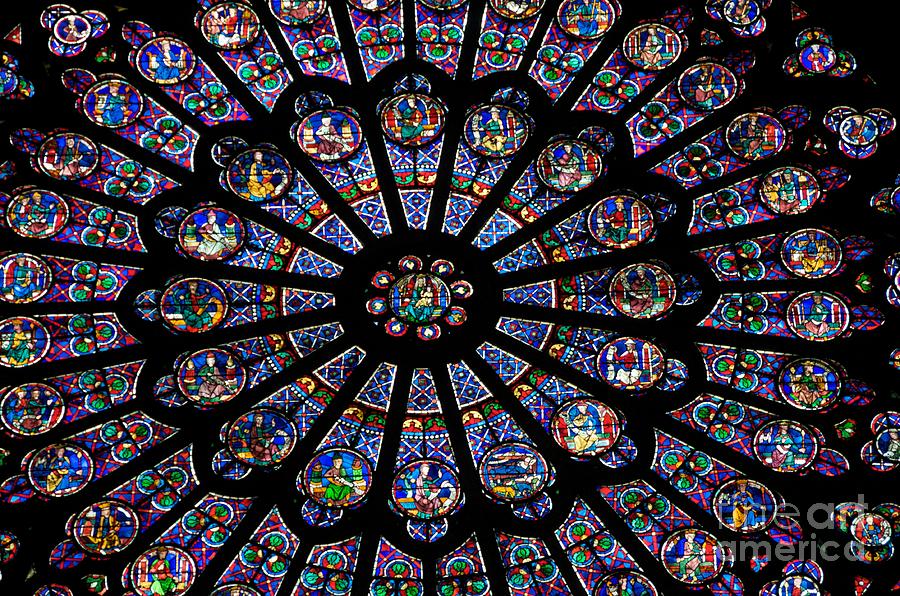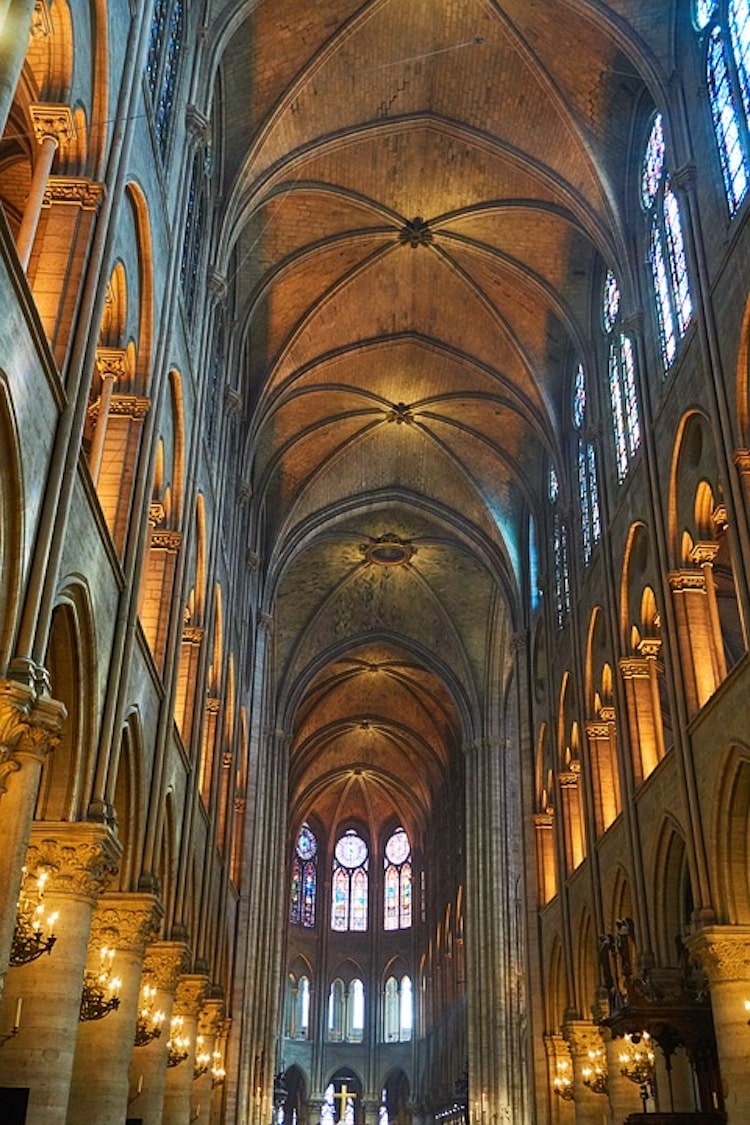Growing developments in Gothic architecture
From the end of the 12th century to the mid to late 13th century, new ideas started to develop in Gothic architecture. One example was the pointed arches. Vaulting a church through crosswise arches became more consistent during this period. The reason being was because semicircular arches of the old Romanesque style would be difficult to create higher building since semicircular arches can only reach a certain height. If I want to build higher, I would have to make the arch steeper. Pointed arches solved this since they were more flexible. Not only did the arches allowed builders to build higher, but it also gave churches a more ephemeral feel. Also, since heavy stones were used, it created pressure downwards and sideways and thus, rounded arches couldn’t withstand the pressure whereas a pointed one did. But that wasn’t enough. Flying buttresses were added on the outside to allow even distribution of weight and reduce building materials.

Engineers have managed to push architecture to new heights, however, it had reached a limit where it was unsafe with cathedrals like the Beauvais collapsing. Before 1250, architects focused more on the technical issues in architecture. However, architects became more interested in decoration as opposed to size. They wanted to create rich visual effects by making pinnacles, moldings, ordinate decorations, gargoyle statues, and window traceries. Other features like rose windows with radial traceries were also added and stained glass which not only added visual effect but also more visibility and light into the building. Window enlargement, triforium galleries, clerestory, and thinning of vertical supporters into one glazed area created an elevating effect. This time in the High Gothic period would become a subgenre of Gothic architecture called ‘Rayonnant‘.

France was the center of Gothic architecture at the time, but its influence would soon spread to other countries like England, Spain, Italy, etc. And each country would develop their own unique style of Gothic architecture.

Lecture Summary
Today, we covered the innovations of communication from 0 to 1450 CE. We looked at how religions such as Christianity and Islam started to gain a foundation during this period and how they would influence art and writing. Innovations such as parchment and the printing press were discussed and how they would spread different writings. Printing would also evolve as many different books, printing blocks, playing cards, and seals would exist and flourish throughout the history. I overall thought that what I learned was very interesting. To learn the origins of not only writing but also printing, branding, patterns, and how religions and wars would influence communication felt very eye-opening. My personal favorites that I learned were the codices and technological innovations. There were many things that I learned as well as some designs that looked inspiring to me that I would like to try and imitate at some point in the future in my personal work.
Sources
https://www.spanish-art.org/spanish-architecture-high-gothic.html
http://history-world.org/gothic_art_and_architecture.htm
https://www.britannica.com/art/Rayonnant-style
E.H. Gombrich, The Story of Art, 16th edition, Phaidon Press Limited, 1950, New York, NY
Image Sources
https://en.wikipedia.org/wiki/Gothic_architecture#/media/File:ReimsCathedral0116.jpg
https://fineartamerica.com/featured/rose-window-famous-stained-glass-window-inside-notre-dame-cathedral-paris-bernard-jaubert.html
What We Can Learn From the Exquisite History and Ornate Aesthetic of Gothic Architecture
Leave a Reply